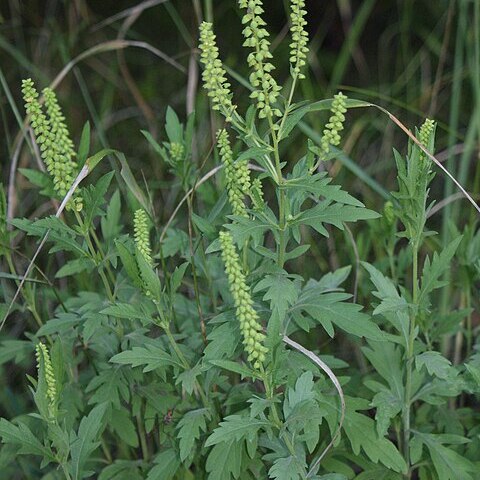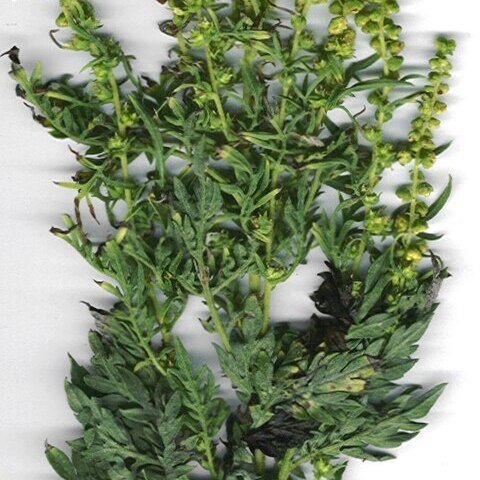Heads numerous, small, unisexual, rayless; staminate heads in a racemiform or spiciform, bractless infl, with subherbaceous, 5–12-lobed invol, flat receptacle with slender, filiform-setose pales, monadelphous filaments, scarcely united anthers, and undivided style; pistillate heads borne below the staminate, in the axils of lvs or bracts, with closed, nutlike or burlike invol bearing 1–several rows of tubercles or spines and containing 1(–several) pistillate fls without cor; pappus none; herbs (ours) or shrubs; lvs often lobed or dissected, in most spp. opposite at least below. 40, predominantly New World. (Franseria)
Annual or perennial herbs, less often shrubs, aromatic. Leaves alternate or sometimes opposite. Capitula unisexual, monoecious. Male capitula small, in racemes or spikes; involucre cupuliform, of connate phyllaries; corolla tubular; anthers ± free, with linear apical appendage; ovary abortive. Female capitula solitary, axillary to upper leaves but below male heads, sessile, 1-flowered; involucre enveloping the achene, becoming hardened, with 4–6 small spines; corolla absent; style branches long and linear, exserted from involucre. Achenes ovoid, smooth, enveloped in hardened involucre; pappus absent.
Annual or perennial herbs, rarely shrubs. Lvs opposite below, often alternate above, simple, lobed to 2-3-pinnatisect. Capitula unisexual, inconspicuous; all florets tubular. ♂ capitula sessile or pedunculate, in ebracteate spikes or racemes; involucre herbaceous, 5-12-lobed; receptacle flat; scales present. ♀ capitula each with a single floret, solitary or clustered, in axils of uppermost lvs; involucre enclosing achene, beaked at fruiting and often bearing 1-2 rows of spines or tubercules. Achenes all similar, ovoid, not winged; pappus 0.


